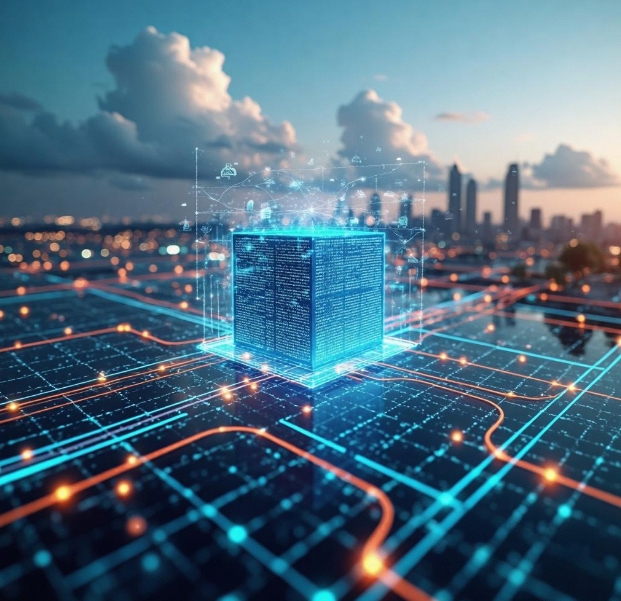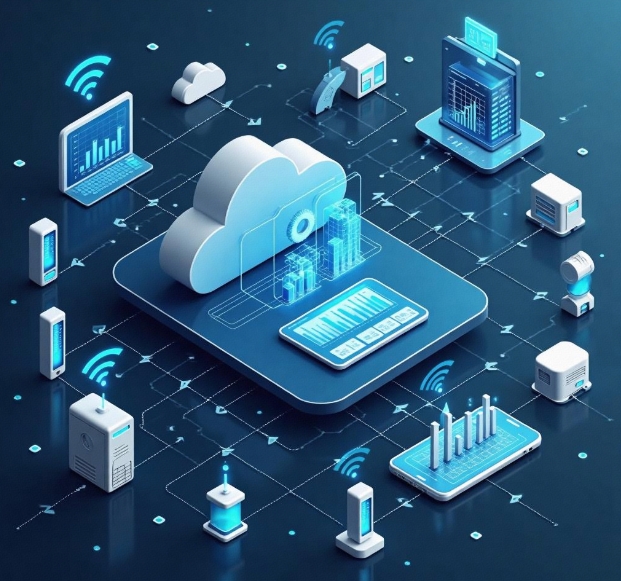Application Prospects of IoT Development Combined with Big Data
- latest articles
- 1.DApp Development & Customization: Merging Diverse Market Needs with User Experience 2.Analysis of the Core Technical System in DApp Project Development 3.How to achieve cross-chain interoperability in Web3 projects? 4.How does the tokenization of points reconstruct the e-commerce ecosystem? 5.How to Set and Track Data Metrics for a Points Mall? 6.What is DApp Development? Core Concepts and Technical Analysis 7.Inventory of commonly used Web3 development tools and usage tips 8.Development of a Distribution System Integrated with Social E-commerce 9.Six Key Steps for Businesses to Build a Points Mall System 10.What is DApp Development? A Comprehensive Guide from Concept to Implementation
- Popular Articles
- 1.Future Trends and Technology Predictions for APP Development in 2025 2.Analysis of the DeFi Ecosystem: How Developers Can Participate in Decentralized Finance Innovation 3.From Zero to One: How PI Mall Revolutionizes the Traditional E-commerce Model 4.DAPP Development | Best Practices for Professional Customization and Rapid Launch 5.How to Develop a Successful Douyin Mini Program: Technical Architecture and Best Practices 6.Recommended by the Web3 developer community: the most noteworthy forums and resources 7.From Cloud Computing to Computing Power Leasing: Building a Flexible and Scalable Computing Resource Platform 8.Shared Bike System APP: The Convenient Choice in the Era of Smart Travel 9.How to Create a Successful Dating App: From Needs Analysis to User Experience Design 10.From Design to Development: The Complete Process of Bringing an APP Idea to Life
I. Introduction
With the rapid development of information technology, the integration of the Internet of Things (IoT) and big data has become a hot topic in the field of technology today. As a new type of network technology, the Internet of Things can collect, transmit, and analyze data in real-time through the connection of various sensors, devices, and networks. Big data refers to the storage, processing, and analysis of massive and diverse data using modern information technology methods to discover potential value and patterns. The potential of combining these two not only provides tremendous opportunities for transformation across various industries but also brings unprecedented innovation and development opportunities for businesses and society.
The application prospects of combining IoT and big data have broad potential in multiple fields, especially in smart cities, smart healthcare, smart manufacturing, and environmental monitoring. This article will delve into the technical background, advantages, and application prospects of integrating IoT development with big data, and look forward to the future development trends of this technology.
II. Basic Concepts of IoT and Big Data
Internet of Things (IoT)
The Internet of Things (IoT) refers to the interconnection of various physical devices and objects through internet technology to achieve automatic collection, transmission, and processing of information. The core of IoT lies in using intelligent devices, sensors, and network technology to achieve real-time monitoring and management of equipment, environments, personnel, etc., thereby improving resource utilization efficiency and quality of life. With the maturity of technologies such as 5G and edge computing, the application scenarios of IoT are increasingly diverse and gradually penetrating various industries.
Big Data
Big Data refers to the processing and analysis of massive and diverse data sets using emerging data collection, storage, processing, and analysis technologies when traditional data processing applications are inadequate. Big data is not only about the sheer volume of data but also emphasizes the diversity of data types, processing speed, and how to extract valuable information and insights from these vast amounts of data. With the widespread application of technologies like cloud computing and distributed computing, big data has become a crucial pillar of modern societal informatization.
Integration of IoT and Big Data
IoT provides real-time data collection channels for big data, while big data offers efficient data processing and analysis capabilities for IoT. IoT devices acquire various real-time data through hardware like sensors and cameras. This data is transmitted via networks to data centers or the cloud, where it is processed, stored, and analyzed using big data technologies, ultimately providing decision-makers with precise information support.
III. Advantages of Integrating IoT and Big Data
Real-time and Precision
IoT devices can collect data in real-time from various locations, especially through sensors and smart devices, with precision down to every second or even shorter intervals. Big data technology can efficiently process this real-time data, providing accurate analysis results to help decision-makers make more scientific and rational decisions.
Large-scale Data Processing Capability
The data generated by IoT is vast in volume and diverse in type, which traditional databases and analysis tools can no longer meet. Big data technology can handle these massive and complex datasets through means like distributed computing and cloud computing, providing more efficient data storage, retrieval, and analysis capabilities, thereby offering strong support to various industries.
Intelligent Decision Support
The integration of IoT and big data enables deep analysis of massive data through algorithms like machine learning and artificial intelligence, helping various organizations and enterprises achieve intelligent decision-making. For example, in industrial production, real-time data monitoring and big data analysis can promptly identify potential issues on production lines, thereby preventing production accidents.
IV. Application Prospects of Integrating IoT and Big Data
Smart City Construction
Smart cities are a typical example of the application of IoT and big data integration. Through IoT technology, devices and facilities in various urban sectors such as transportation, energy, environment, and public safety can achieve interconnection and data sharing. Big data, through comprehensive analysis of this data, helps city managers better perform resource scheduling, environmental monitoring, traffic control, and other tasks.
For instance, in smart transportation systems, traffic sensors collect real-time road traffic flow data, and through big data analysis, traffic congestion can be predicted in real-time, enabling intelligent scheduling, optimizing traffic signal control, reducing congestion, and improving road traffic efficiency.
Smart Healthcare
The integration of IoT and big data has particularly broad application prospects in the medical field. Through IoT technology, real-time monitoring of patients, such as blood pressure, heart rate, body temperature, and other physiological parameters, can be achieved. Big data can assist doctors in achieving precise diagnosis and developing personalized treatment plans through in-depth analysis of this medical data.
Additionally, with the help of big data analysis, hospitals and medical institutions can mine potential disease warning signals from vast amounts of case data, improving early diagnosis rates and prevention capabilities for diseases.
Smart Manufacturing
In the field of smart manufacturing, the integration of IoT and big data can significantly enhance production efficiency and quality. Through IoT technology, manufacturing equipment can achieve automated monitoring and management, collecting various data during the production process in real-time, while big data can perform in-depth analysis of this data to optimize production processes and improve efficiency.
For example, in the automotive manufacturing process, IoT devices can monitor the status and production data of equipment at various production stages in real-time. Through big data analysis, equipment failures can be predicted in advance, enabling preventive maintenance to avoid production halts and thereby reducing production costs.
Environmental Monitoring and Management
With the increasing severity of global climate change and environmental pollution, environmental monitoring and management have become a global focus. IoT devices, through sensors deployed at various environmental monitoring points, can monitor environmental factors such as air quality, water quality, and noise in real-time. Big data analysis can extract potential trends from vast amounts of environmental data, providing a basis for environmental protection decisions.
For example, by using IoT devices to monitor a city's air quality in real-time and combining it with big data analysis, sources of air pollution can be promptly identified, enabling precise governance and regulation to reduce the impact on residents' health.
V. Technical Challenges and Development Trends
Although the integration of IoT and big data has broad application prospects, it still faces a series of technical challenges in practical application.
Data Privacy and Security Issues
IoT devices need to collect large amounts of sensitive data in real-time, and ensuring the security and privacy of this data is an urgent problem to solve. The process of big data analysis also involves data sharing and transmission. Therefore, protecting users' personal privacy and ensuring data is not misused have become bottlenecks in technological development.
Data Quality and Standardization Issues
Data generated by IoT devices comes from a wide range of sources and is diverse in type, with varying quality. To ensure the accuracy and effectiveness of big data analysis results, data needs to be standardized to improve its quality. Additionally, the lack of uniform data formats and standards across different devices and platforms increases the difficulty of data integration and analysis.
Computing Power and Storage Requirements
The massive data generated by IoT requires strong computing power and storage space. Although the application of technologies like cloud computing and edge computing has improved data processing capabilities, effectively storing and processing data in large-scale application scenarios remains a challenge for technological development.
VI. Summary
The integration of IoT and big data has brought profound changes to various industries. Through real-time data collection and intelligent analysis, the combination of IoT and big data not only improves production efficiency and optimizes resource allocation but also demonstrates great application potential in fields such as smart cities, smart healthcare, and smart manufacturing. Although there are still some challenges in technology and application, with continuous technological progress and refinement, the prospects for the integration of IoT and big data are undoubtedly bright.
In the future, with the proliferation of IoT devices and the enhancement of big data analysis capabilities, we can foresee that the integration of IoT and big data will bring smarter, more convenient, and efficient lifestyles to society, promote the digital transformation of various industries, and become an important driving force for social progress and development.
-

How to Use IoT Development to Enhance Supply Chain Efficiency
With the rapid development of the global economy and the deepening of digital tr···
-

Development and Innovation of the Internet of Things in the Healthcare Sector
With the rapid advancement of information technology, the Internet of Things (Io···
-

Data Storage and Analysis Methods in IoT Development
The Internet of Things (IoT) is one of the most revolutionary innovations in tod···

 Blockchain
Blockchain












